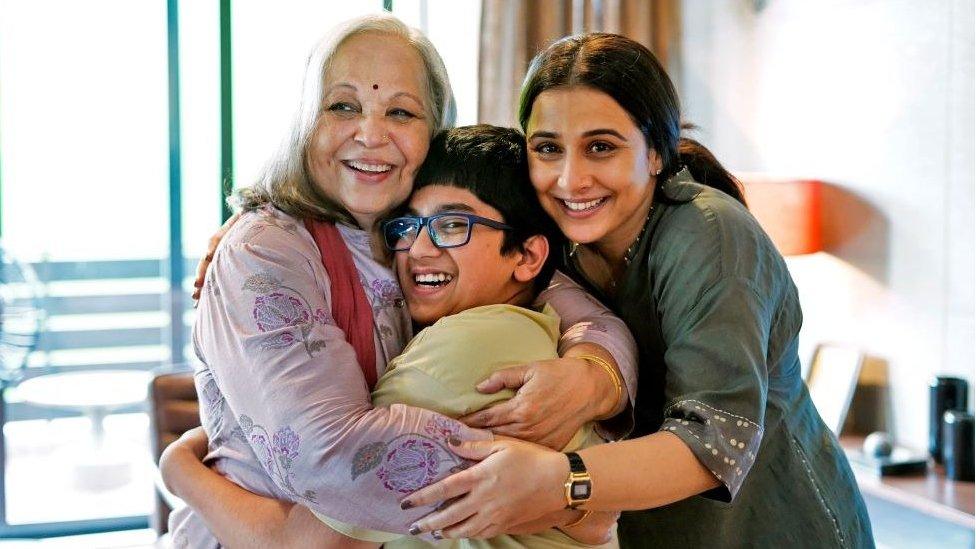Why India's Uttar Pradesh has become the crime haven of TV shows
- Published
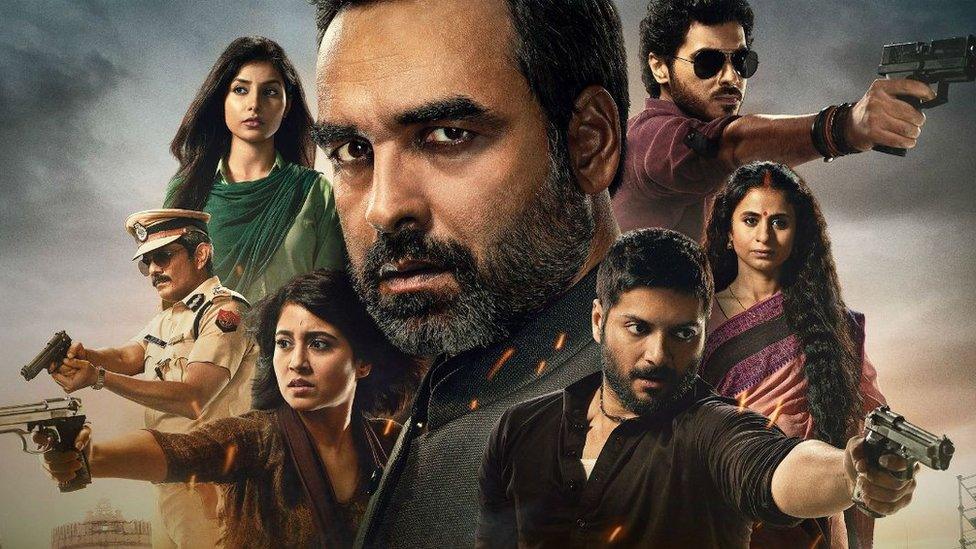
The crime thriller Mirzapur is set to return for a third season
Over the past few years, streaming platforms have allowed Indian filmmakers to expand the range of stories they tell. India's largest state, Uttar Pradesh (UP), is a popular destination for them - but many of the movies and shows set there focus on gang violence and crime. What's often lost is the state's rich history and culture.
The success of small-budget films set in the small towns of northern India in recent years has pushed the Hindi language film and TV industry to set more and more stories there.
UP - which occupies an outsized place in India's political imagination because of its size and population - is an obvious choice of location.
So much so that Cinema Rare, external, a Twitter account dedicated to tracking the arrival of shows and films on Indian streaming platforms, joked that there was hardly a city in UP left for the industry to explore.
The state has also been wooing Hindi filmmakers with incentives to shoot their films and shows there.
From Mirzapur to Paatal Lok, several acclaimed (and many not-so-acclaimed) shows are set in backdrop of the state, telling stories of brutal family feuds and violent murderers.
Crime stories aren't new to Bollywood, India's bustling Hindi language film industry. Satya, a 1998 gangster drama set in Mumbai city, is often credited for setting off a wave of "dark, gritty movies, external that explored the underbelly of the city".
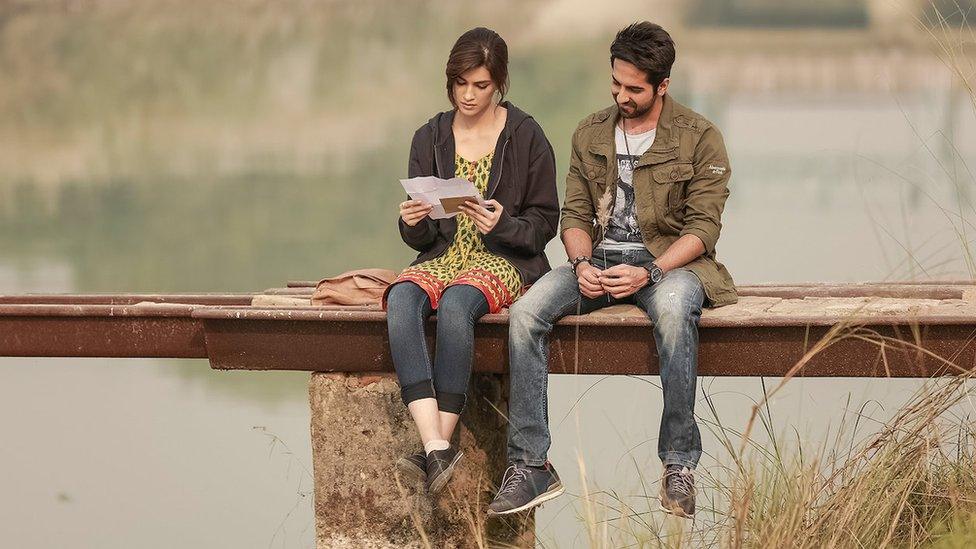
Bareilly ki Barfi was a rom-com set in small-town UP
While the hold of Mumbai's underworld over popular imagination has weakened since then, Satya's influence is still visible in the new wave of crime thrillers.
"Satya changed Hindi cinema in profound ways, but its legacy also includes those who worked on it, benefitted from its success and went on to change Hindi cinema themselves," critic Uday Bhatia wrote in his book Bullets Over Bombay. Among them were directors Anurag Kashyap and Vishal Bhardwaj - the acclaimed filmmakers are both from UP. Bhardwaj had several hits set in the state.
Until Satya, Hindi films had not focussed a lot on plot, says Anubha Yadav, a writer and filmmaker teaching at Delhi University.
"A certain different aesthetic started coming in because plot became important to Hindi cinema. I think web series are now taking it forward to a new level," she says.
But some critics are pointing out a problem.
"Satya was original. Everything after that seemed like a copy of the same thing but with new metaphors, new idioms and, perhaps, new curse words," says sociologist Mohammad Sayeed, who hails from Shahabad in UP.
The genre shaped by Satya's success relies on a certain kind of masculinity and the use of violence to titillate the audience, Ms Yadav says.
UP has a lot to offer apart from its demographic and geographic advantages. The state has long been famed for its "Ganga-Jamuni tehzeeb", a phrase used to describe the syncretic fusion of Hindu and Muslim cultures. It has also been the birthplace of doyens of Hindi literature, Indian classical music, dance and the fine arts.
This complexity is fleeting in these shows, if present at all.
"This is the land of poets. It is the land of (poet) Ghalib. It has the biggest historical stories like the 1857 mutiny [by Indian soldiers against British rule]," Ms Yadav says.
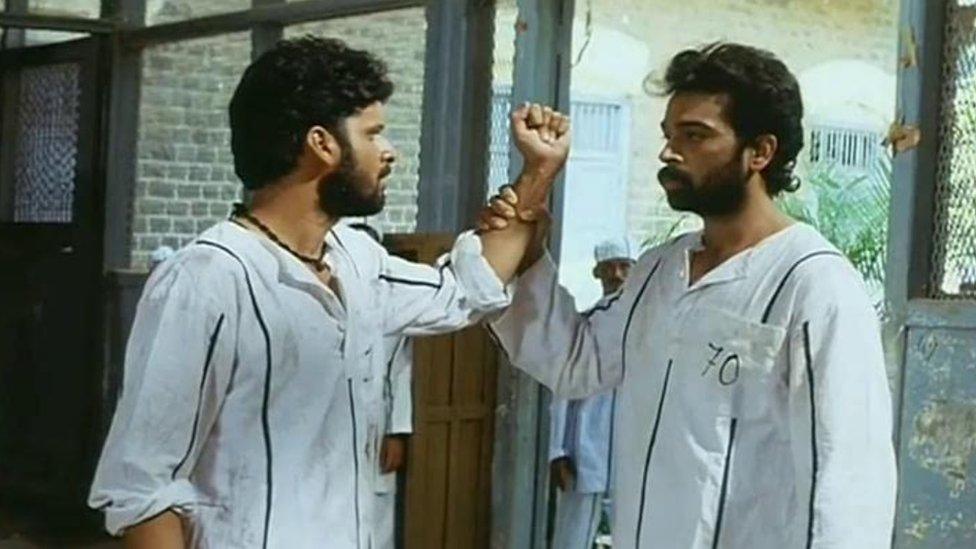
Satya became a genre-defining film that would go on to influence Hindi movies for decades
This isn't to claim that crime is alien to the state. It regularly makes headlines for police encounters, hate crimes and violence against women and minorities.
But popular culture's focus on UP is skewed more towards violence than other large states that also report tens of thousands of crimes every year.
"There's so much history to the place, so much art, craft, dance. There is much more than guns," screenwriter Juhi Chaturvedi, said in a 2020 interview, external.
That same year, a comedy-drama written by Chaturvedi - Gulabo Sitabo - delved into the tug-of-war between a landlord and his tenant as they tried to stake claim on a dilapidated mansion. The writer set the story in Lucknow - UP's capital city, where she grew up - and used the art of local puppetry to take the story forward.
Other small-budget films have also managed to tell funny, nuanced stories in UP without a single bullet being fired - comedy dramas such as Shubh Mangal Zyaada Saavdhan, rom-coms like Bareilly ki Barfi.
"A city or an environment is multi-dimensional... Yes, crime is one part of it. But there is much more to a UP or a Bihar," Chaturvedi had added.
Ms Yadav feels that the problem arises when someone with a limited understanding of the state wants to use its larger idiom- "the most populated city, a very communal place, a caste-ridden place" - without exploring the texture of the region.
This, combined with the news stories of crimes that make national headlines, leads to an "otherisation" of the state's people, both Ms Yadav and Mr Sayeed say.
Mr Sayeed - who briefly helped with the research for a show - says there are larger implications to this in terms of how the state is perceived in the national conversation.
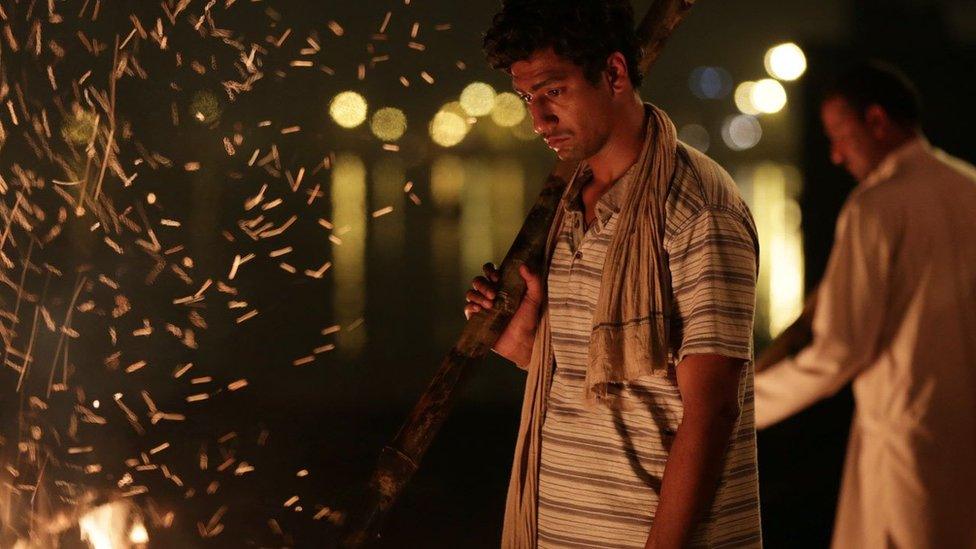
The range of stories to be made about UP is more visible in smaller budget films such as Masaan
Directors have earlier told multi-faceted stories set in UP without shying away from its violence.
"There is violence in Bhardwaj's Omkara (an adaptation of Othello) but it never supersedes and becomes an aesthetic," Ms Yadav says. Independent films like Masaan have captured the violence of routine, daily life.
In 2012, when Kashyap released Gangs of Wasseypur - a two-part crime saga about a coal mafia, set in Wasseypur town of then-undivided Bihar - some residents of the town protested the "insensitive" portrayal of their life and criticised the film for misrepresentation. Some even called the depiction "dangerous" while the film's writer said it was based largely on "reality".
"Bihar and Jharkhand were disturbed by Anurag Kashyap's film - with chutney music (a fusion genre of Indian folk music) being showcased as their regional music, with the idiomatic representation and with the violent representation," Mr Sayeed recalls.
The violence in newer shows has become formulaic in a way that is detached from the story's location. This makes it easier for them to travel across languages and borders because the context matters less and less, Ms Yadav says.
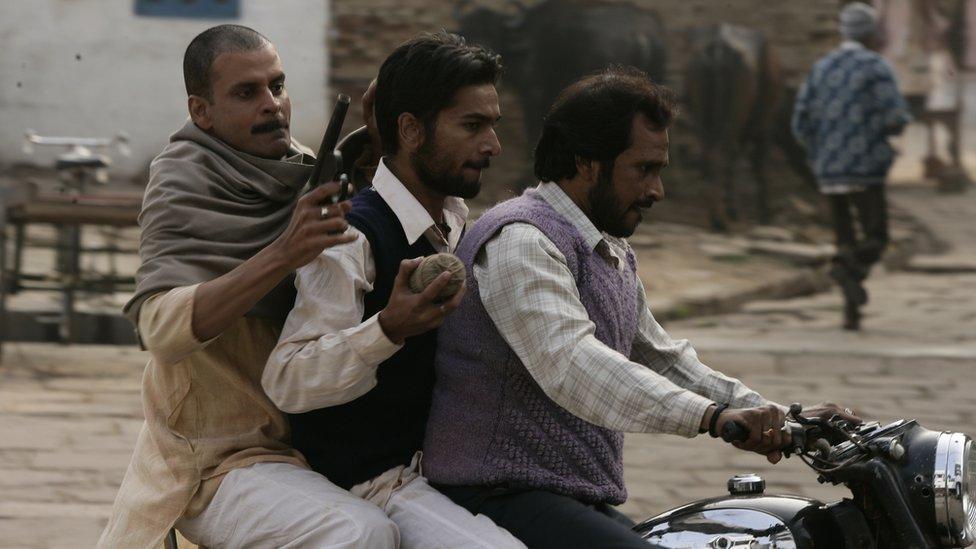
Bihar witnessed protests against the representation of a town in Gangs of Wasseypur
The situation isn't very different for more urbane thrillers such as Sacred Games and Arya.
"Let's imagine Sacred Games in UP, how much will it change? I don't think it'll change much because the aestheticization of violence will still remain the same," Ms Yadav says. "If Mirzapur moved to Gujarat state, very little is likely to change, including maybe the linguistic logic."
This is unlike films such as Masaan or Mukti Bhawan, she says, which capture an essential part of Benaras city in UP and cannot be set elsewhere.
Currently, many of these shows are produced by streaming platforms which have big promotion and marketing budgets to draw in a large audience.
"If [those dynamics] change, I think a lot of other things will also change," she says.

You may also be interested in:
Why this Bollywood film is so controversial

Related topics
- Published21 April 2022

- Published15 March 2022
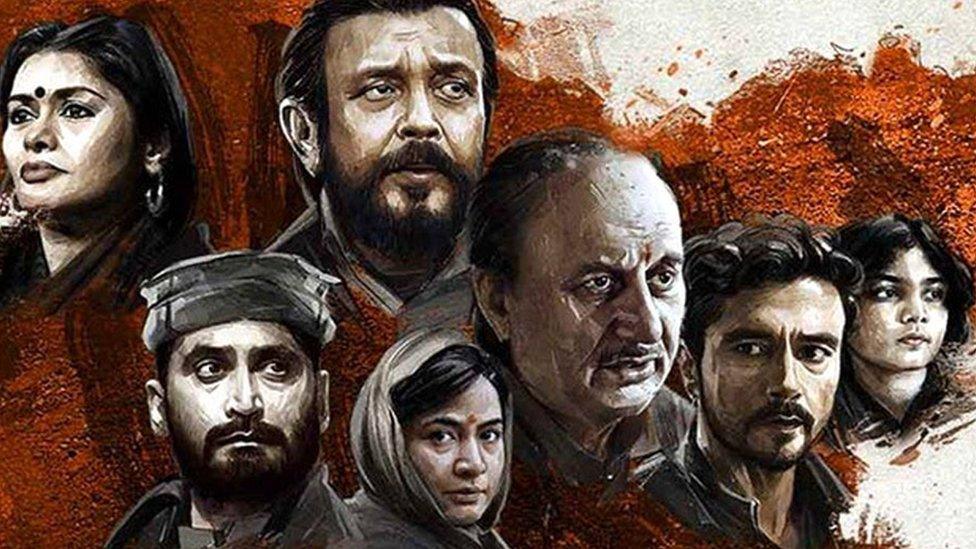
- Published2 April 2022
